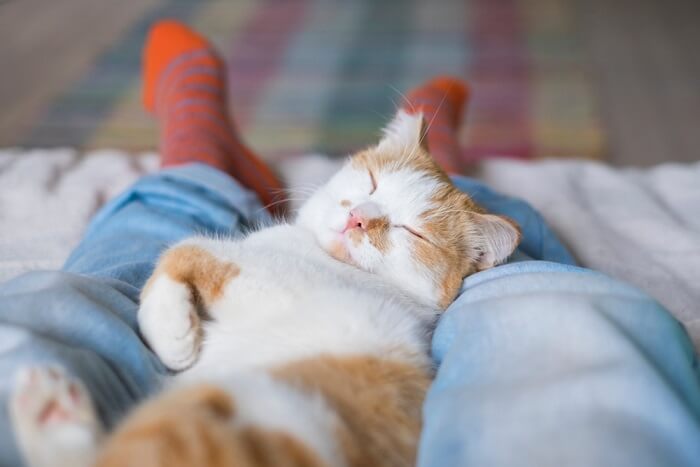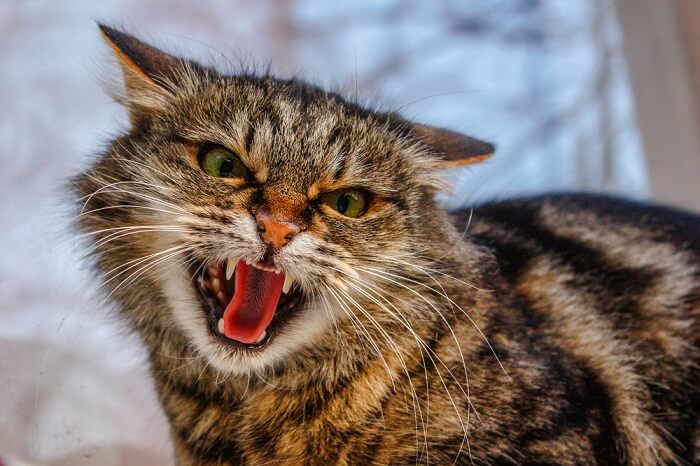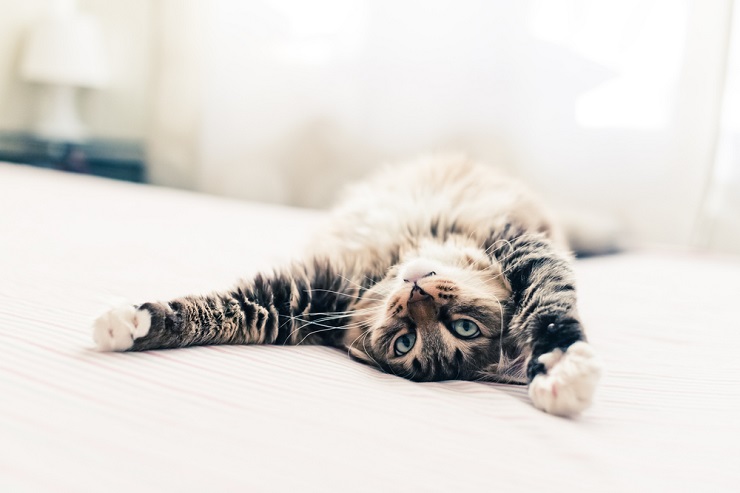Cat Body Language : What Your Cat Is Trying To Tell You?
This page contains affiliate links. We may earn money or products from the companies mentioned in this post through our independently chosen links, which earn us a commission. Learn More
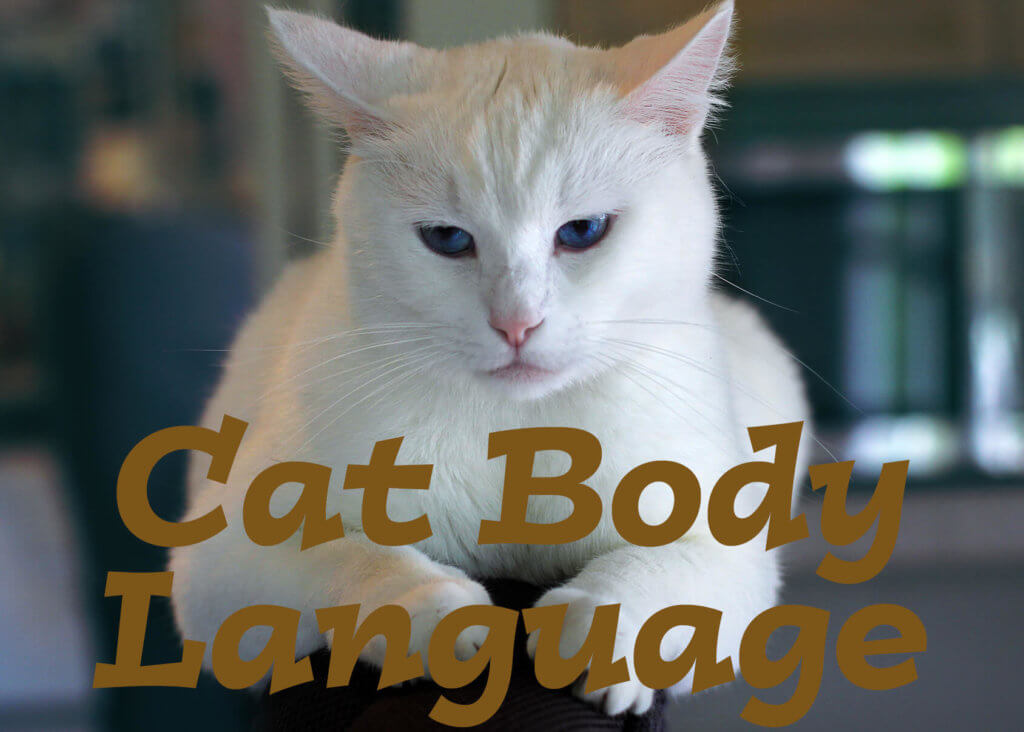
Though your cat may seem aloof, this often-reclusive creature is really quite the chatterbox, if you know what to look for. Your cat uses body language almost exclusively to communicate. Watching how your cat carries himself will help you to understand how he’s feeling.
As you become familiar with cat body language, you will be able to predict his behavior as well. Your cat is talking all the time, and it’s just a matter of knowing how to listen.
Rubbing

Aromatic markers called pheromones help establish and maintain a cat’s territory. These powerful scents are critical elements in communication between cats, and are emitted by different glands located strategically throughout the cat’s body.
Rubbing cheeks acts not only as a means to pick up or leave scent markers, but also as a means to create a relationship based upon physical contact.
Although cats have earned a reputation of being unfriendly, they too need bodily contact for reassurance and affection.
Cats will also use contact to communicate urgency, from gentle reminders of feeding time to a demanding insistent rub. Rubbing or butting may also be a signal of social rank.
The Tail
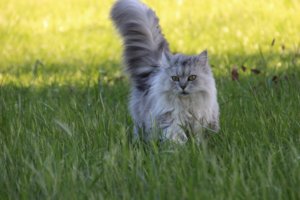
A cat’s tail acts as an extension of his thoughts, as well as an indicator of his mood and even a warning of intention.
Annoyance – Broad swishing of the tail indicates annoyance. For example, if your cat decides he’s had enough petting, he will signal you by swishing his tail in impatience. If you continue, your cat may “bat” you with his paw or growl softly. Though usually good-humored, the batting is an act of aggression indicating your cat’s agitation.
Agitated – Cats will move their tails rapidly back and forth from the base which is a clear threatening signal. Generally speaking, the larger and more rapid the swish, the more upset the cat is. It is to the cat’s advantage to exhibit a visible warning to other cats (and to you), in an effort to avoid direct conflict. Cat’s involved in a conflict may extend their fully bristled tail straight into the air and turn their body sideways to appear larger.
Fear or Submission – If your cat is afraid or is trying to avoid a confrontation with a dominant cat, his tail will puff up or become bristled. He will then lower his tail or tuck it between his legs as a sign of submission.
Excitement or Curiosity – Twitches (as opposed to swishes) of the tail display excitement and curiosity.
Friendly – A raised tail, as long as the fur isn’t bristled, indicates that your cat is being friendly. If your cat is really excited, as often happens when you come home after a long day at work, or when you open a can of cat food, the upraised tail might begin to twitch with anticipation. Your cat may next try to talk to you, or begin rubbing against your leg.
The Body
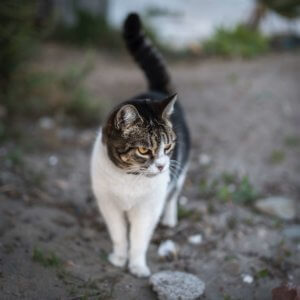
Body language is not just restricted to a cat’s tail. From the way your cat stands to the position of its ears, your cat is saying something.
Legs – Your cat’s legs were not made for just walking around. A bend in the forelegs shows that the cat would rather avoid a fight, but will defend itself if the need arises. When your cat expands his body, fluffing up, it is showing both confidence and aggression. If your cat’s legs are stretched fully, he is self-assured and prepared to attack. A bend in the hind legs, however, shows indecision, or even timidity. When your cat shrinks his body size, legs tucked underneath, he’s showing submission, as well as readiness for action.
Ears – Your cat’s ears do more than just hear, for the ears can talk as well. When the ears are back and the posture is steady, your cat is unsure of what move to make, and considering his options. If the ears are back, and the body is low to the ground, this is a display of shame or remorse. Your cat’s pricked ears show his interest in what’s going on around him.
Head – When your cat raises his head directly, this is an attempt to display dominance. If his head is lowered, that means submissiveness, or even a feeling of inferiority. When his head is completely tucked in, your cat is probably bored. If he’s sneaking around low to the ground at a crawl, he is going after something, stalking his ‘victim’. Be aware that your cat will start a full speed assault.
Vocals

Purring is not a part of every cat’s repertoire of social communication, yet is one of the most common. Not a great deal is known about the mechanics of purring, but purring is associated with contentment and happiness in cats. Interestingly, though, purring is sometimes heard in cats that are severely ill or anxious, perhaps as a self-comforting vocalization.
Vocal cats utilize vowel sounds to indicate their desires, the classic “meow” as an example. The subtle differences in sound communicate commands as well as requests and complaints. In the wild, vowel sounds are restricted to kittens, but the process of domestication has extended this method of communication well into adulthood.
In adult cats, there is a level of high intensity sounds that are created by your cat shaping its mouth. Hisses and grumbling are the most common example, used primarily between other cats, as a means of communicating aggressive or defensive intentions. Cats in heat and feral strays also use this form of communication.
Fight or Flight
 Even a small kitten can become aggressive if backed into a corner by another cat. As adrenaline kicks in, the”fight or flight” response takes over. When this occurs even a little kitten can be successful at scaring off a larger cat if flight is not an option.
Even a small kitten can become aggressive if backed into a corner by another cat. As adrenaline kicks in, the”fight or flight” response takes over. When this occurs even a little kitten can be successful at scaring off a larger cat if flight is not an option.
Fear, and the fight-or-flight response to it, is an instinctive adaptation to many situations. Fleeing or hiding from a perceived danger has preserved cats in the wild throughout history. When the flight response doesn’t work, the fight response is called upon.
All cats are capable of this fear powered aggression. Triggering such behavior depends on the cat’s fear sensitivity threshold, and the accessibility of hiding areas and escape routes. As long as a cat perceives a threat, with nowhere to run, only then will it become aggressive. Most of the time, cats, even in full fight mode, will attempt to avoid direct conflict through a show of intent. Your cat’s first strategy is an attempt at making himself appear larger to his potential foes with hopes that the foe will retreat. With backs arched, claws out, and hair raised, cats lock eyes in a fierce standoff. Hissing and growling, accompanied by the occasional swing of a paw, continues until one cat breaks eye contact, ending the battle of wills.
Typically a dominant victor will emerge from an actual confrontation, and the two cats will usually avoid each other. If fighting continues, it may be time to consult a behaviorist.
Conclusion
While it may seem like cats use an elaborate system for communicating, every cat is different. Over time you will learn your cat’s unique way of communicating. Understanding how your cat communicates will help you and him form a special bond.


